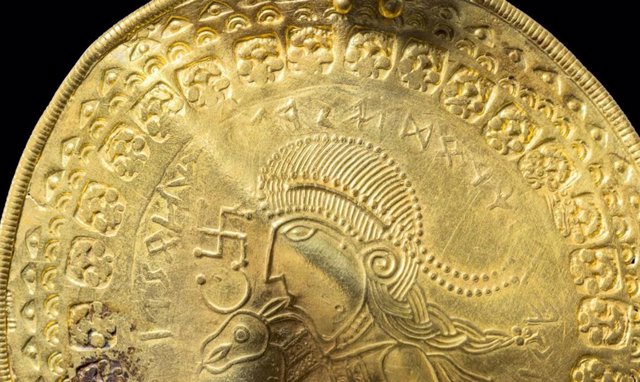
March 8 () –
The oldest known inscription about the god Odin has been identified on a bracteate -gold ornamental medal- from the Vindelev treasury, pre-Viking age and found in Denmark.
This means that Norse mythology can be dated 150 years earlier than before: at the beginning of the 5th century. The runes on this medal are the most “spectacular from the golden horns” and may help researchers understand other prehistoric runic inscriptions, according to the National Museum of Denmark scientists who presented the find.
The Vindelev Treasure was discovered in 2021 and is made up of 22 gold pieces. On one of the gold bracteates (fine, ornamental gold discs), writing experts discovered the world’s oldest inscription with the name of Odin, the chief god of Norse mythology.
part of a sentence – “He is Odin’s man”- refers to the portrait on the bracteate of an unknown king or lord, whose name (or nickname) may have been “Jaga” or “Jagaz”. This means that the gods we know from Norse mythology were already familiar at the beginning of the 5th century: 150 years earlier than stated above.
It was the runologist and writing expert at the National Museum of Denmark, Lisbeth Imer, and the linguist Krister Vasshus who made the discovery.
“The runic inscription has been the most difficult I have had to interpret in all my years as a runologist at the National Museum of Denmark. But the discovery is also absolutely astonishing. It is the first time in the history of the world that the name of Odin is mentioned. This means that Norse mythology can now go back as far as the early 5th century. This makes the Vindelev hoard all the more spectacular. Since the golden horns, he had never seen such well-executed runes and such a long text on a Danish find from this period. It can help us understand other prehistoric runic inscriptions, which we have not yet been able to read,” says Lisbeth Imer it’s a statement.











![[Img #74692]](https://thelatestnews.world/wp-content/uploads/2024/12/What-do-11-and-12-year-old-boys-and-girls-300x200.jpg)